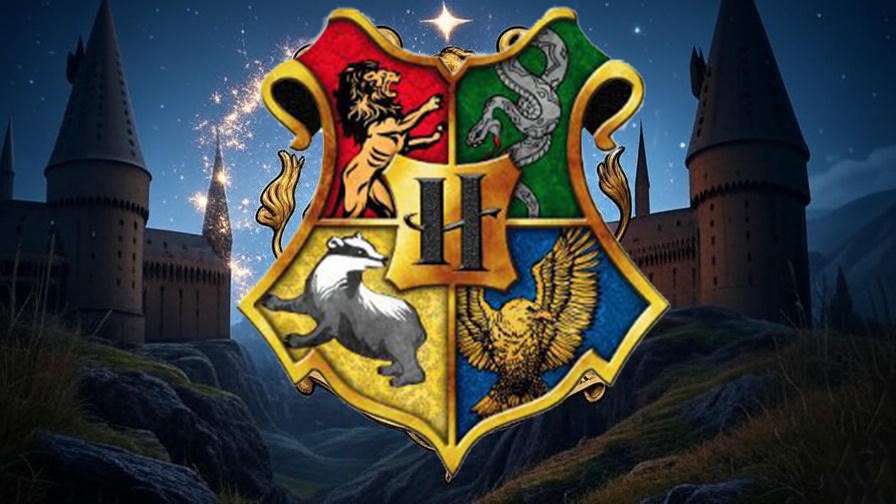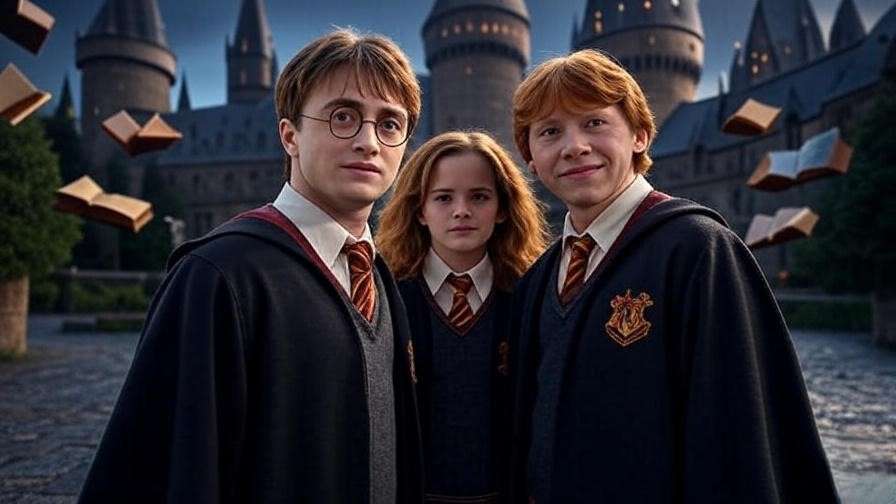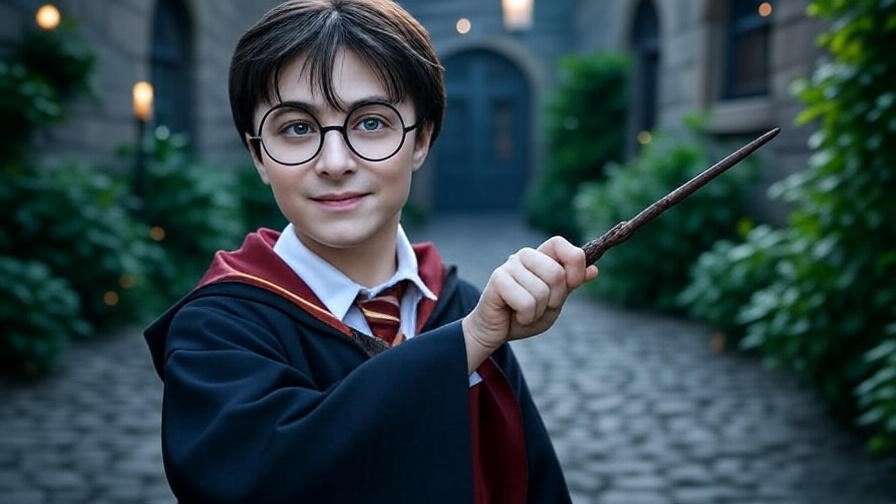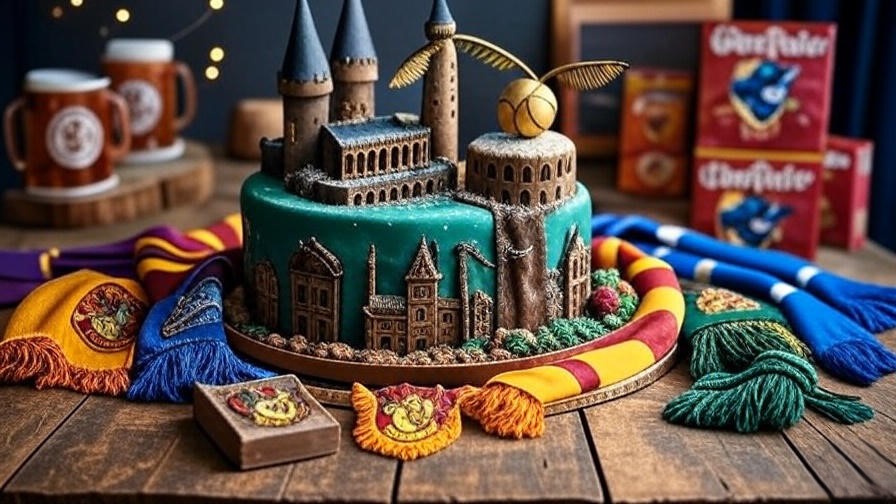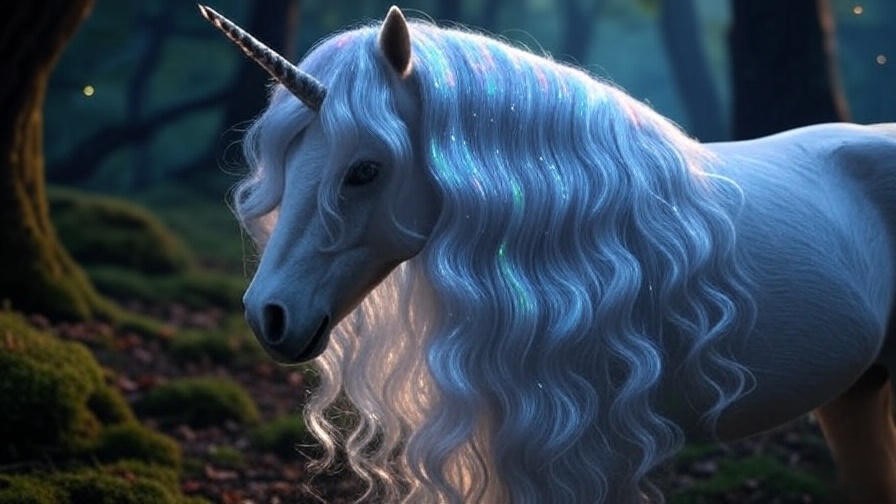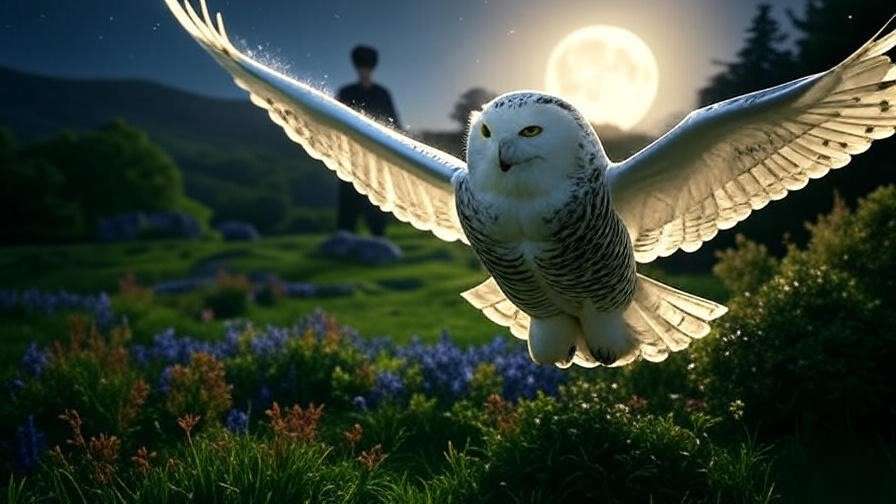Imagine stepping through the grand gates of Hogwarts School of Witchcraft and Wizardry, where ancient stone walls whisper tales of magic and legacy. At the heart of this enchanting institution lies the coat of arms of Hogwarts, a striking emblem that unites four legendary houses under one banner. For Harry Potter fans, this iconic crest—adorned with a lion, eagle, badger, and serpent—is more than just a symbol; it’s a gateway to understanding the values, history, and secrets of the wizarding world’s most famous school. In this article, we’ll unravel the rich symbolism, hidden meanings, and cultural significance of the Hogwarts crest, offering fans a deeper connection to J.K. Rowling’s magical universe.
Whether you’re a Gryffindor proud of your courage, a Ravenclaw seeking wisdom, a Hufflepuff valuing loyalty, or a Slytherin driven by ambition, the coat of arms of Hogwarts holds something for every fan. From its medieval-inspired design to its playful Latin motto, this emblem encapsulates the spirit of Hogwarts. Join us as we explore its origins, dissect its symbols, and uncover lesser-known facts that will enchant even the most devoted Potterheads.
What Is the Coat of Arms of Hogwarts?
A Visual Overview of the Crest
The Hogwarts coat of arms is a heraldic masterpiece, instantly recognizable to fans of the Harry Potter series. At its core, the crest features a shield divided into four quadrants, each representing one of the school’s houses: Gryffindor’s bold lion, Ravenclaw’s soaring eagle, Hufflepuff’s steadfast badger, and Slytherin’s cunning serpent. Above the shield, a ribbon bears the school’s motto, Draco Dormiens Nunquam Titillandus. The vibrant colors—red, blue, yellow, and green—reflect the houses’ distinct identities, while the letter “H” at the center symbolizes Hogwarts’ unity.
This emblem appears throughout the Harry Potter books and films, from the walls of the Great Hall to the uniforms of students. It’s a constant reminder of the school’s legacy, featured prominently in scenes like the Sorting Ceremony and the Triwizard Tournament. Beyond the page and screen, the crest adorns merchandise, from scarves to tattoos, making it a beloved icon in the wizarding fandom.
Historical Context in the Wizarding World
The coat of arms of Hogwarts traces its origins to the school’s founding in the 10th century by Godric Gryffindor, Rowena Ravenclaw, Helga Hufflepuff, and Salazar Slytherin. Each founder contributed their house’s symbol to the crest, creating a unified emblem that reflects their shared vision for magical education. According to the Wizarding World archives, the crest was designed to embody the school’s core values: bravery, wisdom, loyalty, and ambition. Despite the founders’ eventual disagreements—most notably Slytherin’s departure—the coat of arms remains a testament to their collective legacy.
As J.K. Rowling revealed in a 2007 interview, the crest draws inspiration from traditional British heraldry, where symbols and colors convey deep meaning. By blending medieval aesthetics with magical flair, the Hogwarts crest serves as both a historical artifact and a unifying force for students of all houses.
The Symbolism of the Four Houses
Gryffindor – The Lion
The lion, Gryffindor’s proud emblem, is a universal symbol of courage, nobility, and strength. Chosen by Godric Gryffindor, the lion reflects the house’s emphasis on bravery and chivalry. In heraldry, lions often represent leadership and heroism, qualities embodied by characters like Harry Potter, Hermione Granger, and Ron Weasley. For example, Harry’s daring rescue of Ginny in Chamber of Secrets exemplifies the lion’s fearless spirit.
The scarlet and gold of Gryffindor’s quadrant in the coat of arms further reinforce its fiery, passionate nature. Scarlet symbolizes courage and sacrifice, while gold denotes honor and glory—traits that shine in Gryffindor’s most iconic moments.
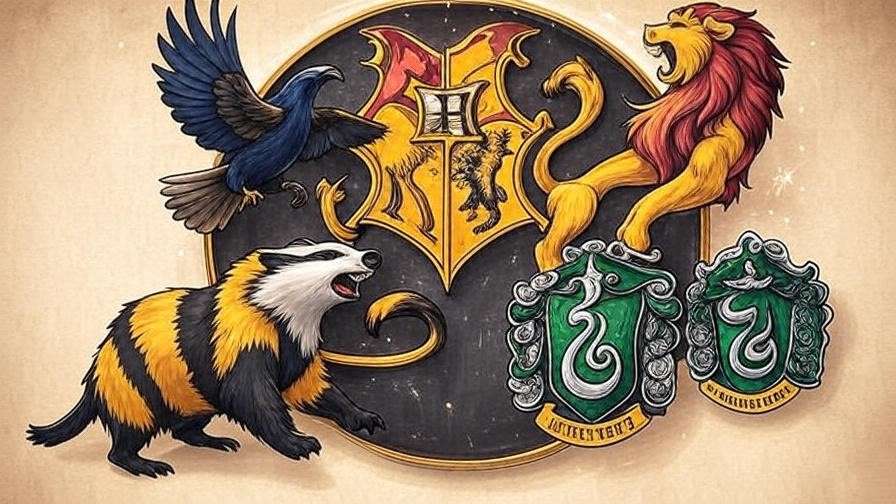
Ravenclaw – The Eagle
Ravenclaw’s eagle soars as a symbol of wisdom, vision, and creativity. Rowena Ravenclaw selected this bird to represent her house’s pursuit of knowledge and intellectual curiosity. Unlike the owl, often associated with wisdom in mythology, the eagle signifies a higher perspective, as seen in characters like Luna Lovegood, whose unconventional insights often prove profound.
The blue and bronze of Ravenclaw’s quadrant evoke clarity and intuition. Blue represents intellect and serenity, while bronze (sometimes depicted as silver in the films) suggests refinement and elegance. This combination underscores Ravenclaw’s commitment to both logic and imagination.
Hufflepuff – The Badger
Often underestimated, the badger is Hufflepuff’s emblem, chosen by Helga Hufflepuff to reflect loyalty, perseverance, and fairness. Badgers are tenacious creatures, known for their hard work and protective instincts—qualities that define Hufflepuff’s inclusive ethos. Cedric Diggory’s honorable conduct in Goblet of Fire highlights the badger’s steadfast nature, proving that loyalty is a strength, not a weakness.
Hufflepuff’s yellow and black colors symbolize earthiness and dependability. Yellow conveys warmth and optimism, while black grounds the house in resilience, making the badger a fitting symbol for this often-overlooked house.
Slytherin – The Serpent
The serpent, Slytherin’s emblem, embodies ambition, cunning, and resourcefulness. Chosen by Salazar Slytherin, the snake reflects the house’s strategic mindset and determination to succeed. While often misunderstood as a symbol of evil, the serpent in heraldry represents wisdom and transformation, as seen in complex characters like Severus Snape, whose loyalty and sacrifice redefine Slytherin’s legacy.
The green and silver of Slytherin’s quadrant evoke ambition and prestige. Green symbolizes growth and determination, while silver suggests sophistication and power, aligning with the house’s drive for greatness.
| House | Animal | Traits | Colors |
|---|---|---|---|
| Gryffindor | Lion | Courage, Bravery, Chivalry | Scarlet & Gold |
| Ravenclaw | Eagle | Wisdom, Creativity, Intellect | Blue & Bronze |
| Hufflepuff | Badger | Loyalty, Hard Work, Fairness | Yellow & Black |
| Slytherin | Serpent | Ambition, Cunning, Resourcefulness | Green & Silver |
The Motto – Draco Dormiens Nunquam Titillandus
Translation and Meaning
At the heart of the Hogwarts coat of arms lies its enigmatic motto: Draco Dormiens Nunquam Titillandus, a Latin phrase that translates to “Never Tickle a Sleeping Dragon.” This playful yet profound motto encapsulates the spirit of Hogwarts, blending humor with a cautionary undertone. For fans, it’s a reminder of the wizarding world’s unpredictable magic and the need for respect in the face of power. The motto suggests that while dragons—symbols of immense strength and danger—may appear dormant, provoking them can lead to unforeseen consequences.
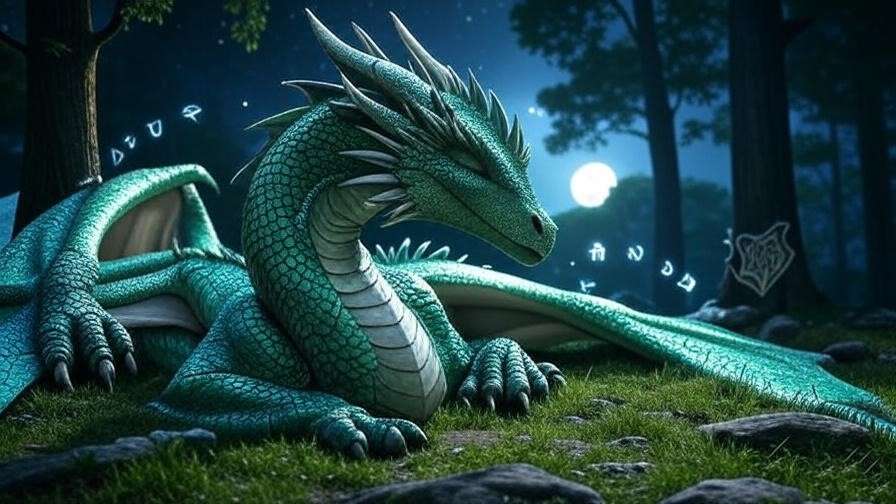
In the context of Hogwarts, the motto reflects the school’s ethos of balance: embracing adventure while exercising wisdom. It’s a call to students to approach challenges with courage but also with caution, a lesson that resonates in moments like Harry’s encounter with the Hungarian Horntail in Harry Potter and the Goblet of Fire. The phrase’s lighthearted tone also mirrors J.K. Rowling’s knack for weaving humor into her world-building, making the coat of arms both approachable and profound.
Cultural and Historical Significance
The use of Latin in the Hogwarts motto is no accident. In medieval heraldry, Latin was the language of prestige, used in crests and mottos to convey authority and timelessness. By choosing a Latin phrase, the founders of Hogwarts aligned their school with this tradition, positioning it as an institution of enduring wisdom. The dragon imagery ties into broader mythological traditions, where dragons symbolize power, protection, and mystery—qualities central to the wizarding world.
The motto also connects to specific moments in the Harry Potter series. Dragons appear in multiple books, from Norbert the Norwegian Ridgeback in Philosopher’s Stone to the Triwizard Tournament’s dragon challenge. These instances underscore the motto’s warning: respect the power of the unknown. According to linguistic experts, the phrase’s structure is deliberately whimsical, with “titillandus” (from “titillare,” to tickle) adding a playful twist rarely seen in formal heraldry. This blend of gravitas and humor makes the Hogwarts crest uniquely memorable.
Hidden Secrets and Lesser-Known Facts
Design Inspirations
The coat of arms of Hogwarts draws heavily from medieval heraldry, a system of visual symbols used to represent families, institutions, and values. J.K. Rowling, a known history enthusiast, likely modeled the crest after British school emblems and noble family crests, which often feature animals and mottos to convey identity. In a 2015 Pottermore (now Wizarding World) article, Rowling hinted that the crest’s design was inspired by her research into medieval European symbolism, where animals like lions and eagles were common in heraldic art.
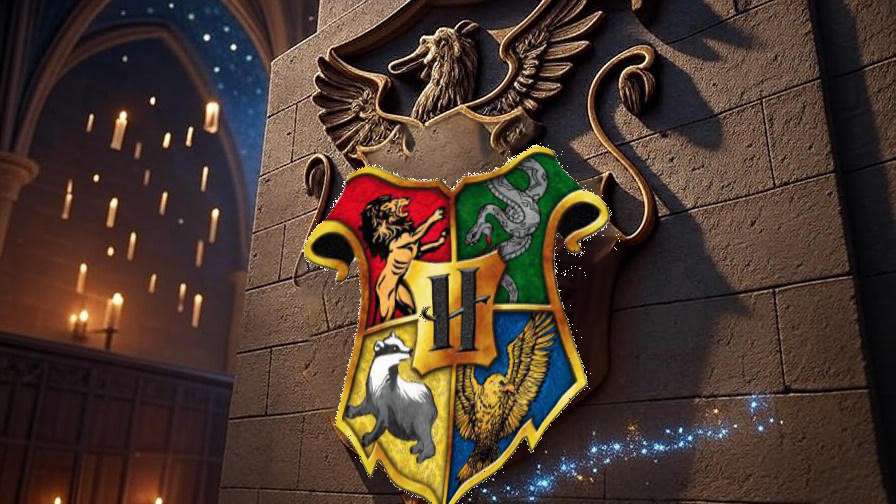
The films, directed by artists like Stuart Craig, amplified the crest’s visual impact. Its intricate details—such as the stylized animals and vibrant colors—were crafted to evoke a sense of timeless magic. For example, the decision to depict Ravenclaw’s eagle as bronze in the books but silver in the films was a deliberate artistic choice to enhance its elegance on screen. These design nuances have shaped how fans perceive and interact with the crest, from cosplay recreations to fan art.
Easter Eggs in the Harry Potter Universe
The Hogwarts coat of arms is more than a static symbol; it’s woven into the fabric of the series, hiding subtle Easter eggs for keen-eyed fans. In Harry Potter and the Chamber of Secrets, the crest appears on the enchanted car’s license plate, a nod to Hogwarts’ enduring presence. In Deathly Hallows, the crest’s house symbols are echoed in the Deathly Hallows themselves, with the Elder Wand (ambition), Resurrection Stone (loyalty), and Invisibility Cloak (courage) loosely aligning with Slytherin, Hufflepuff, and Gryffindor values.
Fan theories also suggest the crest holds magical properties. Some speculate that the shield’s design is enchanted to reflect the balance of house traits, ensuring no single house dominates. While not explicitly confirmed by Rowling, these theories highlight the crest’s mystique. In video games like Hogwarts Legacy, the coat of arms appears in hidden corners of the castle, rewarding explorers with a sense of discovery.
Fan Tip: Want to bring the Hogwarts crest to life? Create a custom patch for your cosplay robe using embroidery techniques, or design a digital version for fan art using tools like Procreate. Ensure the colors match the official palette for authenticity!
The Coat of Arms in Modern Fandom
Merchandise and Collectibles
The coat of arms of Hogwarts is a staple of Harry Potter merchandise, appearing on everything from hoodies to jewelry. Official retailers like the Wizarding World shop offer high-quality items, such as enamel pins and embroidered patches, that showcase the crest’s vibrant design. For collectors, limited-edition items—like the Noble Collection’s Hogwarts crest wall art—are prized for their craftsmanship.
When shopping for merchandise, authenticity matters. Look for products licensed by Warner Bros. or Wizarding World to ensure quality. Fan-made items on platforms like Etsy can be charming but vary in accuracy. For example, some unofficial patches swap Ravenclaw’s bronze for silver, which deviates from the books. Checking reviews and seller credentials can help you find trustworthy options.
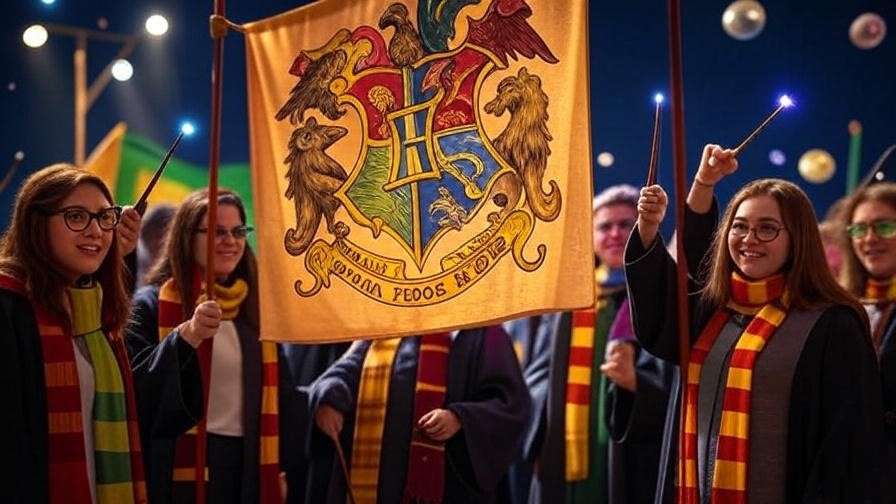
Its Role in Fan Communities
The Hogwarts coat of arms is a unifying symbol in the global Harry Potter fandom. At conventions like LeakyCon, fans proudly display the crest on banners, costumes, and tattoos, celebrating their shared love for the wizarding world. Online communities, such as Reddit’s r/harrypotter and the Wizarding World app, use the crest as a visual shorthand for Hogwarts pride, fostering a sense of belonging across houses.
The crest also inspires fan creativity. Artists on Instagram create stunning reinterpretations, blending the crest with modern aesthetics like minimalist or watercolor styles. Fan events, such as house-themed trivia nights, often use the coat of arms as a centerpiece, reinforcing its role as a symbol of unity. According to LeakyCon organizers, the crest’s universal appeal helps bridge divides between fans of different houses, making it a cornerstone of community identity.
Expert Insight: “The Hogwarts crest is a rallying point for fans,” says Melissa Anelli, co-founder of LeakyCon. “It’s a reminder that, no matter your house, you’re part of something bigger—a magical community that spans the globe.”
Why the Coat of Arms Matters to Harry Potter Fans
A Symbol of Unity and Identity
The coat of arms of Hogwarts is more than a decorative emblem; it’s a symbol of unity in a diverse wizarding world. Each house’s animal and traits contribute to a balanced whole, reflecting the idea that every student—whether bold, wise, loyal, or ambitious—has a place at Hogwarts. For fans, the crest is a badge of identity, often tied to their house affiliation. A 2020 Wizarding World poll found that 68% of fans strongly identify with their sorted house, with the crest serving as a visual anchor for that pride.
The crest’s design also fosters inclusivity. By placing all four houses on equal footing within the shield, it emphasizes collaboration over competition. This resonates with fans who see Hogwarts as a metaphor for community, where differences are celebrated but unity prevails.
Lessons for Real Life
The values encoded in the Hogwarts coat of arms—courage, wisdom, loyalty, and ambition—offer timeless lessons for fans. Gryffindor’s bravery inspires us to face challenges head-on, whether it’s speaking up for what’s right or tackling personal fears. Ravenclaw’s wisdom encourages lifelong learning and creative problem-solving. Hufflepuff’s loyalty reminds us to nurture relationships and stay true to our values. Slytherin’s ambition pushes us to set goals and strive for excellence.
These traits translate into practical takeaways. For example, a Gryffindor-inspired approach might mean volunteering for a leadership role at work, while a Hufflepuff mindset could involve supporting a friend through tough times. By reflecting on the crest’s symbolism, fans can find inspiration to embody these qualities in their daily lives.
Reflective Prompt: Which house trait resonates with you most? Take a moment to consider how the coat of arms’ values—courage, wisdom, loyalty, or ambition—shape your decisions or aspirations.
The coat of arms of Hogwarts is a timeless symbol of the wizarding world’s heart and soul. From its vibrant house emblems to its playful Latin motto, the crest encapsulates the values, history, and magic of Hogwarts School of Witchcraft and Wizardry. By exploring its symbolism, hidden secrets, and role in fandom, we’ve uncovered why this emblem resonates so deeply with Harry Potter fans. Whether you’re drawn to Gryffindor’s bravery, Ravenclaw’s wisdom, Hufflepuff’s loyalty, or Slytherin’s ambition, the coat of arms invites you to celebrate your place in the Hogwarts legacy.
Ready to dive deeper into the wizarding world? Share your favorite house in the comments, or explore our other Harry Potter guides for more magical insights!
FAQs
- What does the Hogwarts coat of arms represent?
The coat of arms symbolizes the unity of Hogwarts’ four houses—Gryffindor, Ravenclaw, Hufflepuff, and Slytherin—each contributing unique traits to the school’s legacy. - Why is the Hogwarts motto in Latin?
Latin was historically used in heraldry to convey authority and timelessness, aligning with Hogwarts’ prestigious status in the wizarding world. - How can I find authentic Hogwarts crest merchandise?
Look for licensed products from retailers like Wizarding World or Warner Bros., and check reviews for fan-made items to ensure quality. - Are there hidden meanings in the coat of arms’ design?
While not explicitly confirmed, fan theories suggest the crest’s balance of house symbols may reflect magical properties or the founders’ vision of unity. -
How do the house symbols reflect the founders’ personalities?
Each animal—lion, eagle, badger, serpent—mirrors its founder’s core values, from Godric’s courage to Salazar’s ambition, creating a cohesive emblem.

